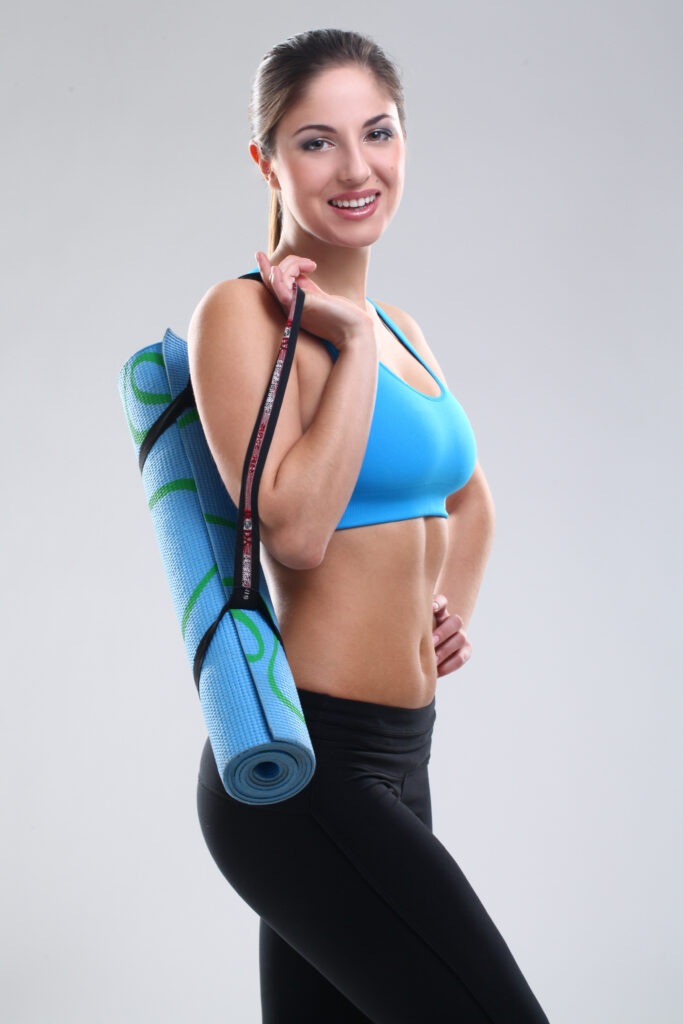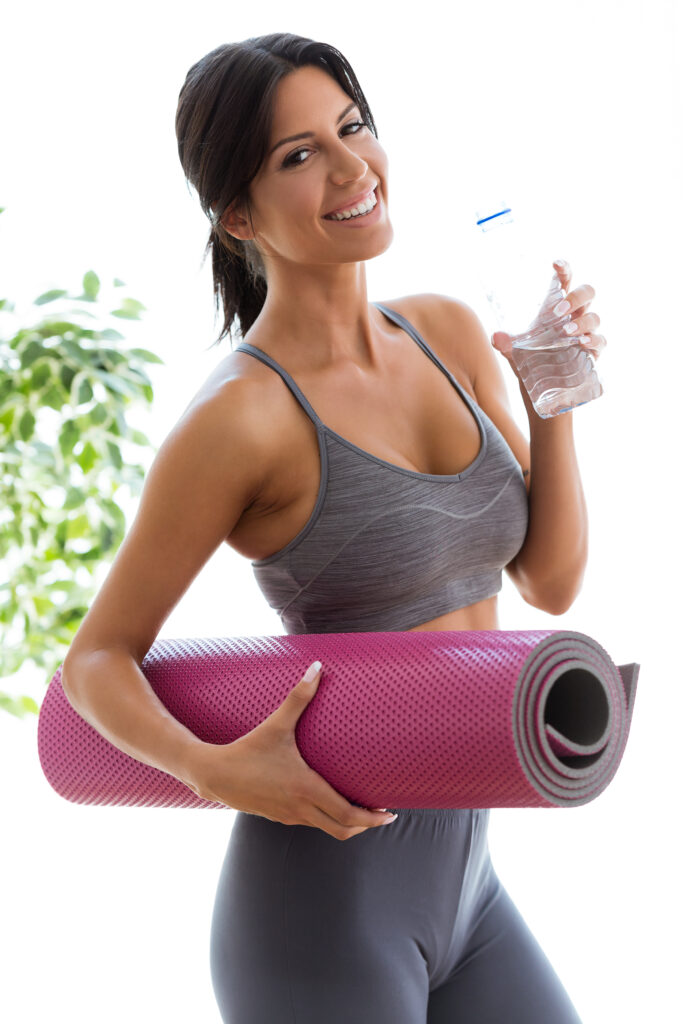
In the world of yoga, the mat beneath you isn’t just a piece of rubber or foam—it’s your foundation for mindfulness, balance, and physical support. In this comprehensive guide, we’ll delve into the critical role of yoga mats, the various types available, how to choose the perfect one, and why proper maintenance matters.
Table of Contents
Why Yoga Mats Matter
Yoga mats are more than just a surface to practice on; they provide stability, comfort, and a personal space for your practice. A high-quality yoga mat can make all the difference in your practice, providing a consistent and comfortable surface to support your poses and alignment. Not only does it offer cushioning for your joints and a non-slip surface for your hands and feet, but it also defines your personal yoga space, setting the tone for your practice.
The benefits of using a yoga mat include improved balance and stability, enhanced grip, and a more comfortable surface to perform asanas (yoga poses). Additionally, it offers a barrier between you and the floor, ensuring cleanliness and hygiene during your practice. Many yoga mats also come with alignment guides and markers to help you perfect your form, making them an invaluable tool for both beginners and experienced yogis.
Types of Yoga Mats
Yoga mats come in a wide variety of options, each tailored to specific preferences and needs. Some popular types include:
- Standard Yoga Mat: These are the most common and versatile mats. They are thin, lightweight, and suitable for all types of yoga.
- Thick Yoga Mat: Extra-cushioned mats are ideal for those with joint issues or for a softer surface during meditation and relaxation poses.
- Eco-Friendly Yoga Mat: Made from sustainable materials like natural rubber or cork, these mats are an excellent choice for eco-conscious practitioners.
- Travel Yoga Mat: Lightweight and compact, these mats are designed for yogis on the go, making it easy to practice wherever you are.
- Non-Slip Yoga Mat: These mats offer superior grip, making them perfect for hot yoga or those who tend to sweat during their practice.
Choosing the Perfect Yoga Mat
Selecting the right yoga mat can be an overwhelming process with numerous factors to consider:
- Thickness: If you have joint issues or prefer a softer surface, a thicker mat might be best. Thinner mats provide better stability and a stronger connection with the ground.
- Material: Mats can be made from PVC, TPE, natural rubber, cork, and more. Choose a material that aligns with your values and needs.
- Texture: Some mats have textured surfaces for better grip, while others are smooth. The choice here depends on your preferences.
- Length: Ensure your mat is long enough to comfortably accommodate your height.
- Portability: If you plan to carry your mat to classes or while traveling, consider its weight and size.
Caring for Your Yoga Mat
Proper maintenance is crucial for hygiene and the longevity of your yoga mat. To keep it in top condition, follow these simple tips:
- After each session, wipe down your mat with a clean, damp cloth to remove sweat and dirt.
- Deep clean your mat regularly using a gentle cleanser or a mixture of water and mild soap.
- Avoid direct sunlight and heat sources that can degrade the mat’s material.
- Roll your mat loosely when storing it to prevent creases and damage.

Enhancing Your Yoga Practice with Yoga Mat Accessories
While the yoga mat is a fundamental tool for your practice, there are various accessories that can complement and enhance your overall yoga experience. Here are some popular yoga mat accessories to consider:
- Yoga Mat Bag: A bag designed specifically for yoga mats makes it convenient to carry your mat to and from classes. It often includes extra storage space for your essentials like water bottles, towels, and keys.
- Yoga Towel: A yoga towel is placed over your mat to provide an extra layer of sweat absorption and grip during hot yoga sessions. Some yoga towels come with non-slip backing to ensure they stay in place.
- Yoga Strap: Yoga straps can assist you in deepening your stretches and improving your flexibility. They are particularly helpful for reaching poses that may be challenging due to limited flexibility.
- Yoga Blocks: Yoga blocks are used to support various poses, providing stability and balance. They are especially beneficial for beginners and those working on alignment.
- Meditation Cushion: If you incorporate meditation into your yoga practice, a meditation cushion or pillow can provide extra comfort and support during extended periods of sitting.
- Yoga Mat Cleaner: A yoga mat cleaner helps maintain the cleanliness and freshness of your mat. Regular cleaning not only ensures hygiene but also extends the lifespan of your mat.
- Yoga Mat Straps: These handy straps allow you to secure your rolled-up yoga mat for easy storage and transportation.
- Bolsters: Yoga bolsters are cylindrical pillows that can be used to support and deepen certain yoga poses, particularly in restorative and yin yoga practices.
By incorporating these accessories into your practice, you can take your yoga experience to the next level. Each accessory serves a specific purpose, enhancing your comfort, stability, and overall enjoyment during your yoga sessions.
The Impact of Yoga Mats
Your choice of yoga mat can create the perfect ambiance for your practice. Some mats are designed with inspiring and motivational designs to enhance your overall experience. The visual and tactile experience of your mat can set the tone for your practice, promoting relaxation, mindfulness, and positive energy.
Conclusion
Your yoga mat is your practice’s unsung hero, providing comfort and support. By selecting the right one, you can significantly enhance your yoga journey, making it a worthwhile investment in your health and well-being.